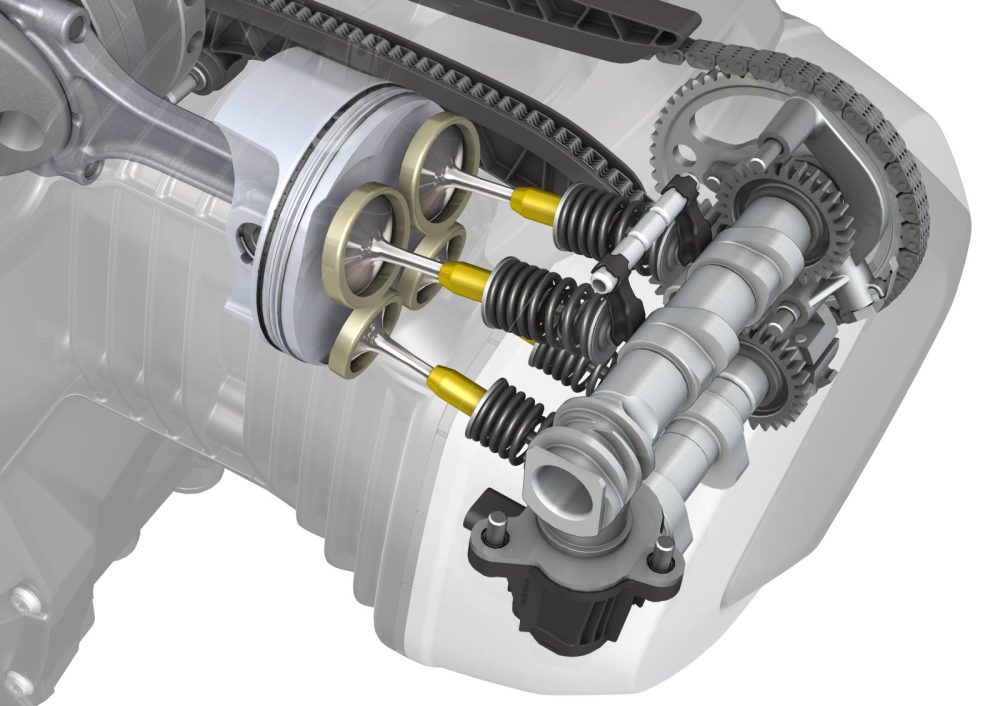The ShiftCam variable valve timing and lift system has already spread from BMW’s R1250 boxer twins to the S1000RR’s inline-four and now the same idea is heading towards the firm’s small single-cylinder range.

A new patent application from BMW describes how the ShiftCam system, which allows the intake camshaft to switch between two sets of lobes to suit either high or low-rev situations, is to be adopted on a single-cylinder engine.

The design shown is essentially similar to the one used in the R1250 boxer twins. The intake camshaft can slide laterally to bring either a low-rpm lobe or a more aggressive high-rev lobe into contact with the intake valves. As on the other ShiftCam engines, the movement is achieved by solenoids which push pegs into spiral slots on the camshaft, pulling it in one direction or the other depending on which solenoid is activated. The whole camshaft can move a few millimetres as it’s driven via a wide idler gear, as on the R1250 (on the four-cylinder S1000RR engine a different system is employed, with sliding sleeves carrying the cam lobes on a splined shaft).

The advantage of ShiftCam, regardless of which engine it’s fitted to, is that at low revs and small throttle openings, a mild cam lobe can be used, with minimal lift (how wide the valve is opened), short duration (the length of time the valve is open) and little overlap (the period when the inlet valve has opened before the exhaust valve has closed). That combination helps increase gas speed into the cylinder at low revs, improving torque, and the reduced overlap means emissions and efficiency are improved.

At higher revs the same lobe would be a limiting factor, restricting the overall amount of air/fuel mix entering the cylinder and putting a cap on peak power. Here, the ShiftCam setup switches to a more aggressive cam lobe with more advanced valve timing, more lift and more duration and overlap, allowing more air/fuel mixture into the cylinder. At higher rpms, the added duration and advanced timing don’t cause emissions problems, as there’s less time for unburnt mixture to escape through the exhaust during the overlap period when both intake and exhaust valves are open.

Compared to the R1250 ShiftCam arrangement, the new BMW patent – which the document specifically says is intended for a single-cylinder engine – is more compact. The solenoids to move the camshaft are between the valves rather than at the end of the camshaft, reducing the size of the cylinder head, and the spark plug is mounted at an angle to make space for it.

What’s not clear is whether the ShiftCam single will be a replacement for the 310cc engine used in the current G-series BMW models or if it’s intended for a larger-capacity single-cylinder, plugging the substantial gap that currently sits between the G-series bikes and the 853cc F-series twins.












